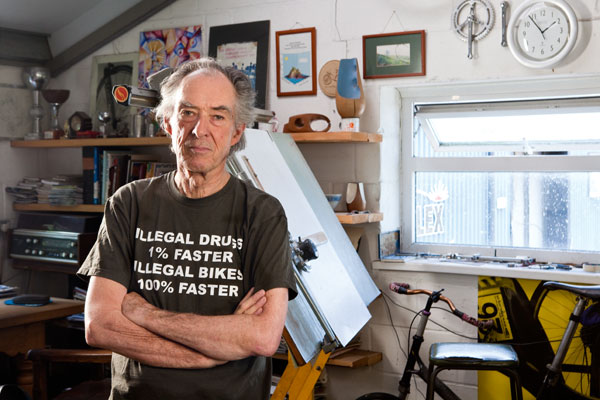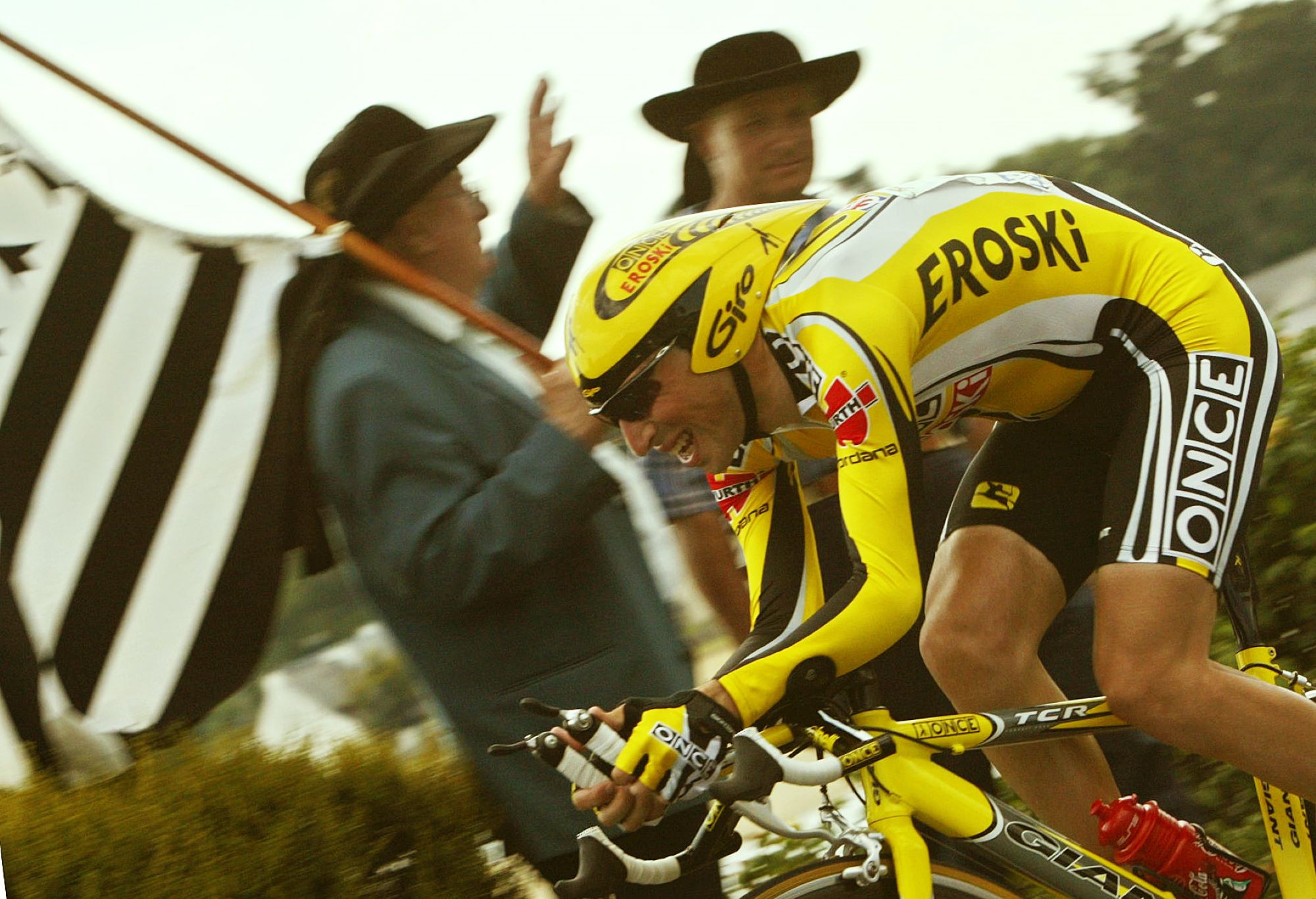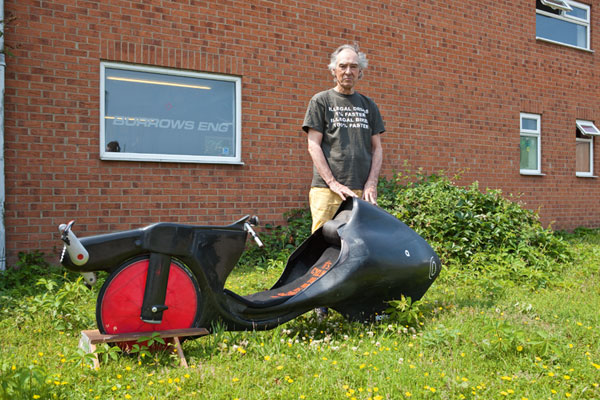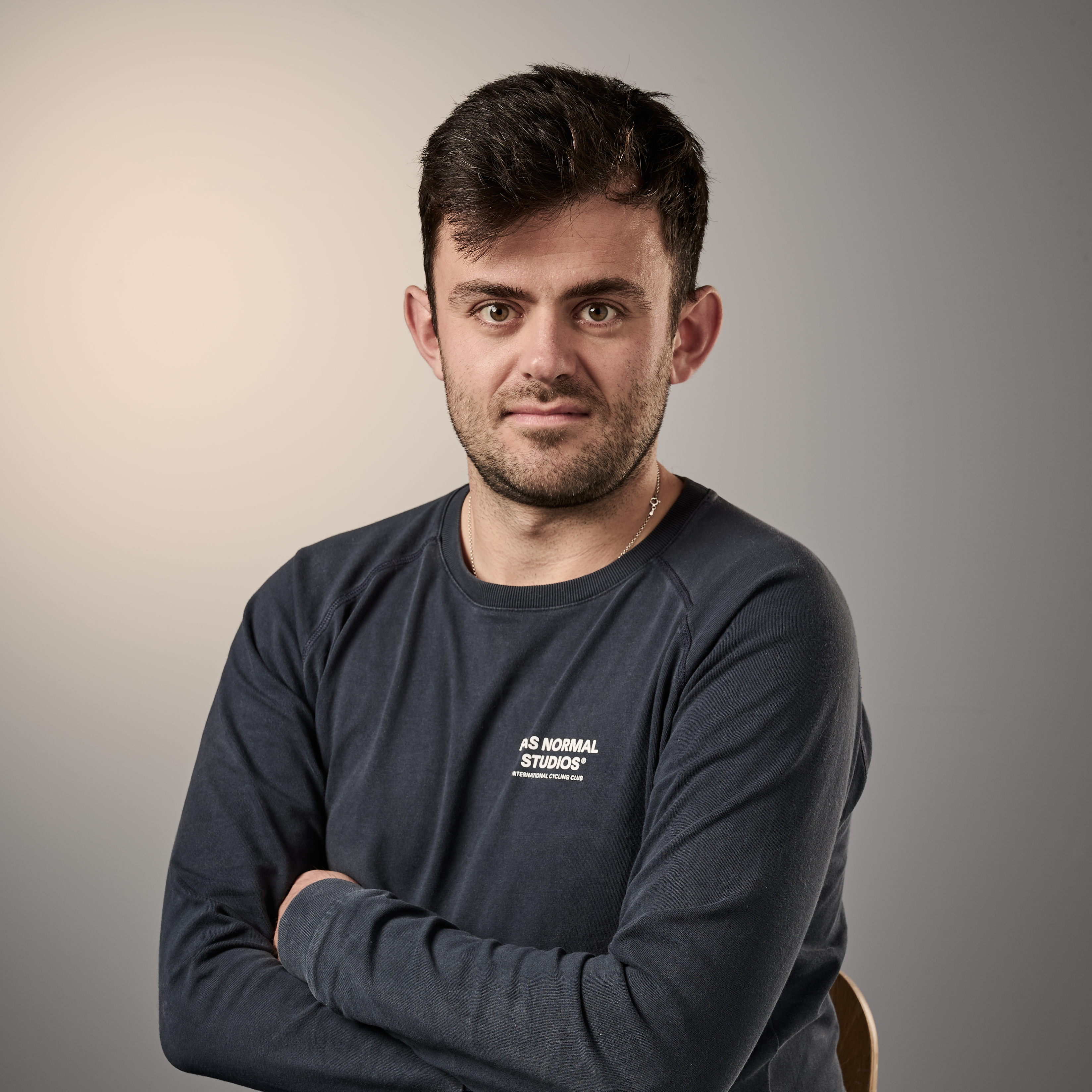Mike Burrows: the designer who influenced the bikes we ride today
A legendary bike designer and innovator Burrows, who passed away this weekend, created the Lotus 108 ridden by Chris Boardman at the 1992 Olympics


Rob Spedding
Legendary bike designer and engineering pioneer Mike Burrows has passed away.
Burrows' most famous work was the Lotus 108 which was ridden by Chris Boardman to individual pursuit victory at the 1992 Olympic Games in Barcelona and he was also behind the first road bikes to utilise compact frame design.
On Twitter, Boardman paid tribute to Burrows and his influence on his life and career. Boardman said, "he was the Godfather of modern bicycle design and my life would not have been the same without his influence.”
The frame builder, who was born in 1943, had been working on the designs for the 108 throughout the 1980s.
However, before it could see the light of day in any competitive action the UCI would first need to overturn its ban on monocoque frames.
Once the organisation lifted the ban, it enabled Boardman to ride to victory on the engineering masterpiece. Boardman’s gold medal at the Olympics in 1992 was the first for Great Britain since 1920 and put British Cycling firmly on the map.
The Olympics were only the beginning of Boardman’s illustrious career which also included a stage win at the 1994 Tour de France riding a Lotus 110, a road bike version of the 108 designed by Burrows.
The latest race content, interviews, features, reviews and expert buying guides, direct to your inbox!
Designer Torgny Fjeldskaar worked as design director at BMC in Switzerland for five years and told Cycling Weekly that Burrows' work, particularly on the 108, was ‘game changing’ in so many ways.
He said: “I remember watching the Olympics and they had recently changed the rules to allow bikes like that one [Lotus 108]. Before that happened, you know it was just ordinary bikes and it wasn’t that exciting in my opinion. This was such a game changer, it was just jaw dropping to see that a bike could look like that and then obviously perform that well.
“It was one of those bikes from that era that really made me want to be a bike designer.”
Fjeldskaar explained that Burrows’ influence was wide ranging and consequently encouraged people to think more outside the box.
He added: “It inspired so many people in terms of thinking more about what a bike could be. I think it maybe didn’t necessarily inspire them to copy that design themselves, but more to open up their minds as designers and rethink what a bicycle could be. That’s what for me was so inspiring about Mike Burrows.”
"THIS WAS SUCH A GAME CHANGER"

Burrows' work extended across all areas of bike design from road bikes, cargo bikes, track bikes and latterly recumbents, built at his Norfolk workshop.
One of his other iconic designs was the original Giant TCR (Total Compact Road), the world’s first compact road bike frame. Its sloping top tube would eventually become a staple on almost all of the best road bikes seen today.
Before the rest of the professional road cycling world accepted this new design, it would need to win some big bike races and it first began to do that with the Spanish ONCE team.
From there the TCR would prove to be completely innovative and began to be adopted across the whole cycling industry.
Every road bike since can trace its origins back to Burrows famous design.
Fjeldskaar said, “I was a student at that time and not involved with racing like I am now. Although what I saw was how much of an impact the TCR had on the whole industry, not just racing. One of the biggest impacts it had was on manufacturing costs. These new compact frames enable you to reduce the number of sizes which I think is really fascinating.
“He [Burrows] was just so great at looking at the bigger picture. His body of work makes that so clear. He thought about everything from manufacturing costs to world record breaking aerodynamic designs and then cargo bikes and commuter bikes. He was someone who really believed that bicycles could change the planet. If you just look at all those things he worked on, it’s so clear that he had a massive impact on the industry.”
"HE WAS SOMEONE WHO REALLY BELIEVED BICYCLES COULD CHANGE THE PLANET"

One of the other bikes designed by Burrows was the 8Freight cargo bike, a machine which cycle courier company Pedal & Post from Oxford in the UK use. The company claims that their business wouldn’t exist today without Burrows' work.
Chris Benton from Pedal & Post said: “We’ve got 10 of the 8F that Burrows designed in our fleet at the moment. We use them for same day deliveries, medical deliveries around Oxford and they’re still going strong. Some of them have done more than 100,000 miles which is remarkable.
“They were just designed so brilliantly. With moto forks and the ability to have such a big capacity on the back. Everyone in our team loves riding them.
“That design that we picked up back in the day has meant we can expand and do so much. They’ve just been absolute work horses.”
At the front of Burrows ethos was the need to get more people involved with and riding bikes.
In a 2013 article with Cycling Weekly, the pioneering designer said: “It's getting people on bicycles that matters, and the trickle-down effect.”
An important statement and one which we could all certainly agree with.
Norwich calling...

When I was still editing a cycling magazine, Mike Burrows and I were in semi-regular contact. In the days when we had desk phones, seeing a number with an 01603 area code was a welcome sign that Mike was calling from his Norwich engineering unit for a chat, and that I should put an hour or so aside.
To be honest, I rarely got a word in, but I didn't mind. Mike would hold forth on subjects ranging from why one of the latest bike designs wasn't all it was cracked up to be, to the benefits of shorter crank lengths or why I should find space in the magazine for more recumbent content. Of course, I was more than happy to listen, because Mike, as well as being hugely knowledgeable, influential and opinionated, was also great fun.
His love of recumbents - or human-powered vehicles - was our usual point of contention. However hard he tried, I couldn't be persuaded to try one out. He invited me to sample one at the HPV world championships and I sent someone else along instead. We talked about a trip to Norfolk to try out one of his Ratracers, but it never happened. Of course, I now wish I'd made the effort, as folk like Mike are few and far between - and getting rarer. Rob Spedding

After previously working in higher education, Tom joined Cycling Weekly in 2022 and hasn't looked back. He's been covering professional cycling ever since; reporting on the ground from some of the sport's biggest races and events, including the Tour de France, Paris-Roubaix and the World Championships. His earliest memory of a bike race is watching the Tour on holiday in the early 2000's in the south of France - he even made it on to the podium in Pau afterwards. His favourite place that cycling has taken him is Montréal in Canada.
- Rob SpeddingContent Director